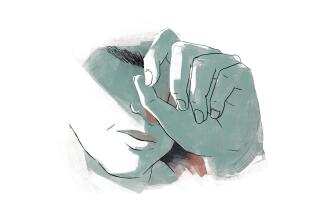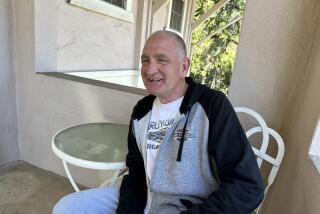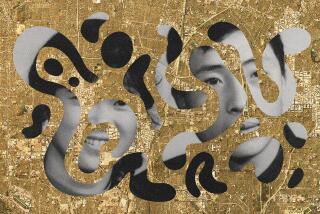Breaking the Barriers to Help : New Program Offers Drug Treatment for Asian Immigrants
The man sitting in Elizabeth Koo’s Santa Ana office had a definite hangdog look.
“I’m very upset,” he told Koo, his drug counselor. “I’ve been running a long time alone. There are too many bumps and hurdles.”
A Vietnamese refugee living in the United States since 1981, the 39-year-old former soldier had shouldered more than his share of woes. After spending time as a prisoner of the Viet Cong, he had escaped to America, leaving behind a wife and two daughters. Despondent over the loss of his family and the vagaries of life in the United States, he had developed a serious cocaine habit that nearly landed him in the streets. Now he was being treated with methadone and attending weekly sessions with Koo.
“I know it’s hard,” the counselor told her client, proffering a tissue to wipe away the tears. “But I want you to know that you are not alone. There is hope. We are here for you. We will pray for you and cheer you on.”
Then she asked him to take a urine test.
The man, who wore thongs and spoke broken English, belongs to a little known Orange County subculture whose existence is becoming increasingly evident. The group consists of Asians--especially refugees and immigrants--who have serious drug problems. Experts say their numbers are growing. And now, despite considerable cultural barriers that make treatment difficult, a nonprofit agency has opened the county’s first anti-drug program aimed specifically at Asian immigrants. Besides individual counseling, it includes drug abuse prevention meetings held at a local high school.
“We are trying to help people get on with their lives,” said Koo, treatment coordinator for Asian American Substance Abuse Treatment Services, run by United Cambodian Community Inc.
“They are dying emotionally, spiritually, socially and physically. It’s putrefying.”
While no hard statistics exist on the incidence of drug abuse among Asian immigrants, Koo said, many experts believe them to be more prone to addiction than the general population.
Toshiaki Sasao, a UCLA psychologist, recently conducted a study on the prevalence of drug and alcohol abuse among Asian Americans statewide. He concluded that while the number of abusers is generally unremarkable, it is unusually high in certain socioeconomic “pockets,” especially among recent immigrants, including refugees.
Koo said the reason has its roots in the immigrants’ home countries, many of which historically have not enforced drug laws nor considered drug abuse serious. The situation was greatly aggravated during the Vietnam War by thousands of U.S. servicemen whose presence created a huge market for illicit drugs that, in some cases, provided the livelihoods for Vietnamese families.
“When they come here, many are already on drugs,” Koo said of the Vietnamese immigrants who form the bulk of the county’s refugee population. Add to that the economic, social and psychological stresses of adjusting to a new culture, she said, and the temptation to use drugs can be almost overwhelming.
The problem was considered serious enough to prompt the Asian American Planning Council, a group of Orange County Asian experts established in 1987, to form a special task force last year to look into it.
“As Asians we don’t know how to deal with (drug abuse) because there are very few models available,” said Alan Woo, chairman of the council and head of its Orange County Asian Pacific Substance Abuse Task Force. “Agencies in Los Angeles keep getting referrals from Orange County because there is no place for them to go here.”
In a first step toward changing that, the federal government last year awarded United Cambodian Community Inc. a three-year grant to begin treating addicted Asians in Orange County. The agency had already been conducting preventive educational programs since 1988.
But there are considerable cultural barriers to treatment, according to Woo and other experts. To begin with, he said, most Asians are taught to keep their feelings to themselves. They are particularly close-mouthed about drug abuse, he said, because of the shame they believe that its disclosure will bring to their families.
“The way the family deals with it is either by not talking about it or by throwing the abusing family member out,” Woo said.
And even if the problem is acknowledged, Woo and others said, luring Asians into treatment is difficult because of their natural distrust of counseling and because many do not consider drug abuse a treatable disease.
“In most Asian languages there is no word for drug abuse,” he said. “They are dealing with a very Western concept that an addiction of this sort can be cured. Some Asian philosophies teach that you’re a drug addict because you are lazy or stupid. You were born that way; it’s your fate.”
The Cambodian agency is attempting to rid the community of drug abuse in a number of ways.
For starters, the agency offers a drop-in center for youths at its Santa Ana office designed to keep youngsters off the streets by creating a friendly environment that attracts those most likely to use drugs. Among other features, the center contains pool and Ping-Pong tables.
The organization also provides individualized counseling--in various Asian languages--for about 26 drug-addicted clients, mostly from Vietnam and Cambodia. While most of the counseling employs traditional Western psychotherapy techniques, Koo said, she is working toward initiating the use of such Asian practices as acupuncture, tea drinking and religious ritual.
Although most participants are referred to the agency by the county Probation Department, churches or schools, Koo said, bilingual agency representatives solicit others through carefully planned presentations in the Asian community.
Koo claims a success rate of about 50% in keeping her clients off drugs.
Yet the cultural barriers have been difficult to overcome.
After holding several group therapy sessions, Koo said, the agency abandoned them because of the clients’ general discomfort in discussing drug-related problems in the presence of other Asians. “They just clammed up,” she said.
Even the Asian student group that meets weekly at Fountain Valley High School as part of the agency’s drug prevention program is euphemistically called an “honor club.” That’s done to avoid offending parents who, organizers fear, might not let their children attend if they knew the program’s subject matter.
Now that they have come to America and adopted the values of the society, Koo explained, most Asian immigrants “don’t like the word drug . It’s a taboo subject that they don’t want to be identified with. I don’t say I’m a drug abuse counselor; I come in through the back door.”
A recent meeting of the high school group was instructive. Instead of talking about drugs, the students spent the morning acting out the interactions of a refugee family. One of them, posing as the dad, stood pulling his cowering son’s hair in anger, while another, posing as the mom, shrank back in horror begging him to stop.
“The family is from Vietnam,” Koo told the students. “They are trying to survive in a new culture where their family relationships are beginning to deteriorate.”
That led to a heartfelt discussion among the students of their own family situations.
“I don’t even talk to my mom,” one 16-year-old confided. “I have nothing to talk to her about. I haven’t been able to talk to my parents for a long time.”
Koo hopes that by helping the students get in touch with--and express--their feelings, she will make them less likely to get involved in drugs. “It’s difficult, no?” she said to them. “You need to communicate.”
At bottom, she said, is her desire to right something in the community that she sees as terribly wrong.
“We are trying to help people get up on their feet instead of letting the barriers and problems hinder them,” Koo said. “I see progress in those who are really determined to change. We want to get rid of the putrefaction of drug addiction.”
More to Read
Sign up for Essential California
The most important California stories and recommendations in your inbox every morning.
You may occasionally receive promotional content from the Los Angeles Times.










